News Archive
Weekly Balloon News #2 - October 28th 2022
Recent balloon launches and landings
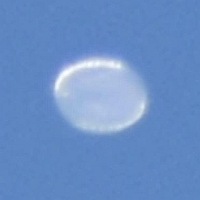
- Last week I've informed that Aerostar had launched on Oct. 18th two Thunderhead balloons from its Innovation Campus near the small town of Baltic in South Dakota: HBAL609 and HBAL610. These two were followed by another one, HBAL 611, launched on Oct. 20th. Of the trio, only HBAL610 is still in flight: it moved across cental US towards the Gulf of Mexico and then moved into Mexico itself crossing the country above Hidalgo, Querétaro and Michoacan states, causing some UFO reports which as usual in Mexico are not easily dismissed as earthlings. At right we can see one of the images obtained in Oct. 26 near Zimapán. Currently the balloon is gently floating above the Pacific Ocean off the coast between Lázaro Cárdenas and Acapulco.
And what about the other two?. HBAL609 landed after little more of 5 days of flight NE of Denison, Iowa, while HBAL611 did the same after 49 hours aloft, 11 km SE of Wisconsin Rapids, Wisconsin. - Last but not least, while I was preparing this report, Aerostar launched another Thunderhead, but this time from the west coast. The balloon with callsign HBAL612 took off at 12:30 utc on October 27th from Paso Robles Municipal Airport in San Luis Obispo county, California. The balloon moved during the day towards the Bakersfield area flying at about 63.000 ft. Its current location can be followed in real time on the ADS-B exchange website.
This is not the first time that Aerostar uses this airport for their launches. Back in July 2019, they performed two balloon missions from there.
What's on in the field
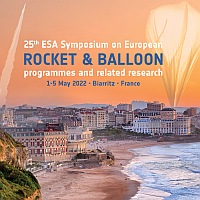
- Finally, after so much wait, this past week have been published online the proceedings of the 25th ESA Symposium on European Rocket & Balloon Programmes and Related Research held back in May in Biarritz, France. The conference started in 1973 to provide a discussion forum for scientists and engineers using sounding rockets and balloons for basic and technical research, education as well as other applications. The programme of the symposium also includes related research by means of ground-based, aircrafts and satellite instruments as well as new technical developments within rocket and balloon systems and instrumentation and ranges facilities. The symposium is organized and sponsored every two years by the European Space Agency (ESA) and the Centre National d'Etudes Spatiales (CNES).
The papers from the conference are available to download for free at: eventsair website - Past week, Canadian government announced funding for a climate science satellite mission along with Canadian Space Agency and NASA. The Canadian contribution to the mission is called HAWC, which stands for High-altitude Aerosols, Water Vapour and Clouds and is formed by two instruments: SHOW (Spatial Heterodyne Observations of Water) and ALI (Aerosol Limb Imager). The later, developed by the University of Saskatchewan since 2012, has been part of several balloon missions from Canada to Australia. ALI is an atmospheric monitoring tool that measures the concentration of aerosols in the upper atmosphere using a unique optical device. The last iteration of the instrument flown in 2022 can detect a wider range of optical wavelengths, measuring both orientations of the polarization state.
The launch of the satellite carrying ALI would occur in 2031. - HALO SPACE one of the firms involved in balloon-based sub-orbital tourism (misleadingly marketed as "space tourism") announced this week that this December they will be making its first test flight of a prototype of its space capsule. The balloon flight will be conducted at India's National Balloon Facility in Hyderabad, state of Andhra Pradesh, by staff of the Tata Institute for Fundamental Research. According to the publication, a second test flight is already planned for end of the first quarter of 2023 in Spain. The Spain-based company claims that once it completes successful trials, it will start its commercial flights in 2025 and later plans to have flight bases installed in four continents.
During the last few years we have witnessed an unusual growth in the "ecosystem" of the balloon-based tourism, which makes me wonder how many of these initiatives will finally see the light of day, especially if we take into account the complexity that a manned mission to the stratosphere entails. An analysis of this type, however, exceeds the objective of this small bulletin, which is why I will surely expand on it in the near future in an article that I am preparing. Stay tuned !
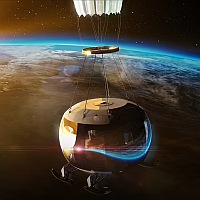
New contents in StratoCat
- Since the last update, I've turned my attention to the very active Chinese balloon program. Focused in yearly campaigns in remote and unpopulated areas of the Tibetan Plateau, the field operations are very defiant due to the harsh conditions on which they are carried out. Since 2018, the Chinese Academy of Sciences created the Honghu Special Project (Near Space Science Experiment System) which is a strategic pilot technology program focused on the exploration and study of the near space environment. Multi-payload platforms are used to carry out comprehensive measurements in the near space region.
Historically, the language barrier, together with a tendency of the Chinese balloon program to offer few details regarding its operations, make it quite difficult to offer a complete panorama of the activities of the Asian giant in this field. However, the notable improvement in automatic translation systems in recent years, together with a greater openness -albeit at a merely informative level- have allowed me to expand the detail of missions carried out recently.
In the table below you will find the relevant data. Clicking in the experiment name you can access a more detailed flight report plenty of technical details, pictures and external references, when available.
See you in seven days.Launch base Date Experiment Flight duration  Dachaidan
Dachaidan2022/10/4 SOLAR CORONAGRAPH ---  Dachaidan
Dachaidan2022/9/28 MULTI-INSTRUMENTAL PLATFORM 12 h 38 m  Dachaidan
Dachaidan2021/9/20 NEAR SPACE RADIATION BENCHMARK LOAD VERIFICATION SYSTEM ---  Dachaidan
Dachaidan2020/9/3 BAP-CAS (Balloon-Borne Astrobiology Platform) 18 h 44 m  Dachaidan
Dachaidan2020/8/23 MULTI-INSTRUMENTAL PLATFORM + 16 h  Dachaidan
Dachaidan2019/9/5 MULTI-INSTRUMENTAL PLATFORM ---  Dachaidan
Dachaidan2019/9/4 MULTI-INSTRUMENTAL PLATFORM 3 h 40 m  Dachaidan
Dachaidan2019/9/1 MULTI-INSTRUMENTAL PLATFORM 17 h 30 m  Dachaidan
Dachaidan2019/8/27 MULTI-INSTRUMENTAL PLATFORM ---  Dachaidan
Dachaidan2019/8/16 MULTI-INSTRUMENTAL PLATFORM 30 h  Urad Banner
Urad Banner2019/6/5 BAP-CAS (Balloon-Borne Astrobiology Platform) 6 h 22 m  Jiuquan
Jiuquan2018/9/21 HYPERSONIC MODEL DROP TEST ---  Urad Banner
Urad Banner2018/8/9 MULTI-INSTRUMENTAL PLATFORM ~ 5 h
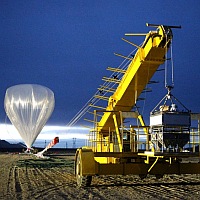
Weekly Balloon News #1 - October 20th 2022
A month or so had passed since I've started this weekly space to tell you about -the otherwise invisible- new contents of the site. Totally unaware to me, it slowly turned into some kind of resume of balloon-related news plus the new additions to StratoCat. As many of you will remember, in October 2019, I had started to edit twice a month "The Stratospheric Report" much more ambitious in scope, design and dedication but which finally fell under its own weight when our lives were suddenly stopped by the pandemic.
Today, far from that unreachable goal, I'm presenting the much lighter "Weekly Balloon News" another attempt to gain some regularity offering you brief resumes of what's going on in the field, the usual speculation (fancy term for "insider data" from sources I must to protect) and of course with a big focus on the new contents that week after week enrich this humble project that just turned 17.
Let's see how much it endures.
Recent balloon launches and landings
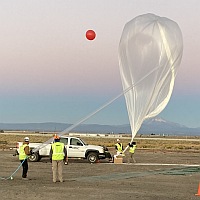
- Near Space Corporation the balloon firm from Tillamook, Oregon performed two balloon flights from Madras Municipal Airport on October 7 and October 12 (image at right). Althought at the moment of writing these lines I have not information on the purpose of the flights, both missions were used as drop missions, or at least that is what is deduced from the monitoring of the flights through ADSB-Exchange. One of the flights -the one launched on 12- could be the announced flight of the STV-2 reentry system developed by Space Works planned for past May.
- Yesterday, Aerostar launched two Thunderhead long-duration balloons from its Innovation Campus near the small town of Baltic in South Dakota. Both balloons -nomenclated as HBAL609 and HBAL610 moved fast towards south and are now above Kansas and Oklahoma respectively as can be seen in this map. The two previous missions of the firm have been gone from the ADS-B grid for a while so I consider their missions terminated. Final numbers are: for HBAL604 44 days aloft last seen in the Gulf of Mexico on September 30, and for HBAL608 8 days of flight with last whereabout north of Bermuda.
What's on in the field
- JPL recently announced that back in July they tested twice in the Nevada desert a scaled-down prototype of the aerial robotic balloon, or aerobot that could one day take to the Venusian skies. The balloon is designed to withstand the corrosive chemicals in Venus' atmosphere. During the flights, the balloon's materials were tested for the first time, giving the team confidence that a larger aerobot design could operate in Venus skies. The ultimate goal of the aerobot would be to travel on the Venusian winds, floating from east to west, circumnavigating the planet for at least 100 days. The aerobot would serve as a platform for a range of science investigations, from monitoring the atmosphere for acoustic waves generated by venusquakes to analyzing the chemical composition of the clouds.
Near Space Corporation was in charge of coordinate both flights. - Ten years had passed since the last jump of the Red Bull Stratos mission that took the Austrian parachutist Felix Baumgartner to the top of the stratosphere to break several records. To commemorate the event, Red Bull TV presented on his youtube channel the documentary SPACE JUMP: How Red Bull Stratos Captured the World's Attention. The 48 minutes long piece is focused on the impact in media of the event and how it was ground-breaking in terms of live-stream. In my opinion, it's okay but it does not add much more to what we already saw in the documentaries that were presented a few months after the event.
- Hemeria, the French defence and aerospace conglomerate, announced last week the acquisition of CNIM AIR SPACE, which from now on will be known as HEMERIA Airship.
CNIM is the biggest firm in charge of developing stratospheric balloons and airships in the European Union and was the main provider of the French balloon program since its inception when the company was known as Zodiac Aerospace. According to the press release, the DEFINVEST sovereign fund of the French Ministry of Defence will remain the owner of 15% of the capital, alongside HEMERIA Invest.
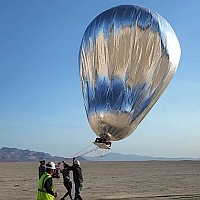
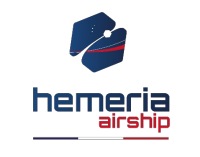
New contents in StratoCat
- The group on which I worked this past week, was in fact an entire campaign. In february 2008, CNES performed a series of balloon missions as part of the SCOUT O3 scientific initiative to study the ozone in the tropics. The launch site choosen was the International Airport of the Seychelles Islands in Mahe. In that oportunity, five balloons were launched: two were technical flights of small superpressure balloons and the rest transported different payloads for atmospheric sensing onboard long-duration Montgolfier Infra-Red balloons better known as MIRs. First mission on MIR transporting the SAOZ UV-visible spectrometer was launched on February 11. It was followed by MULID an Italian lightweight microlidar on February 15 and the final MIR mission devoted to a gas chromatograph for in situ measurements of halocarbons called microDIRAC on February 18.
The campaign was completed with two superpressure balloon missions, the first one in February 21 carrying a system called Driftsonde devoted to perform drops of meteorological sondes in remote areas and the second to transport a pressure, temperature and wind sensor called TSEN on February 24.
I was able to complete these flight records with the kind help of Stephane Louvel from CNES.
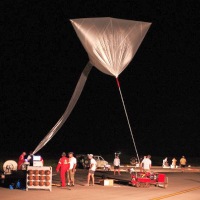
As usual, all the flight reports are full of technical details, pictures -when available- and external references on peer-reviewed papers, freely available thanks to Sci-Hub and the open access community.
See you in seven days.


